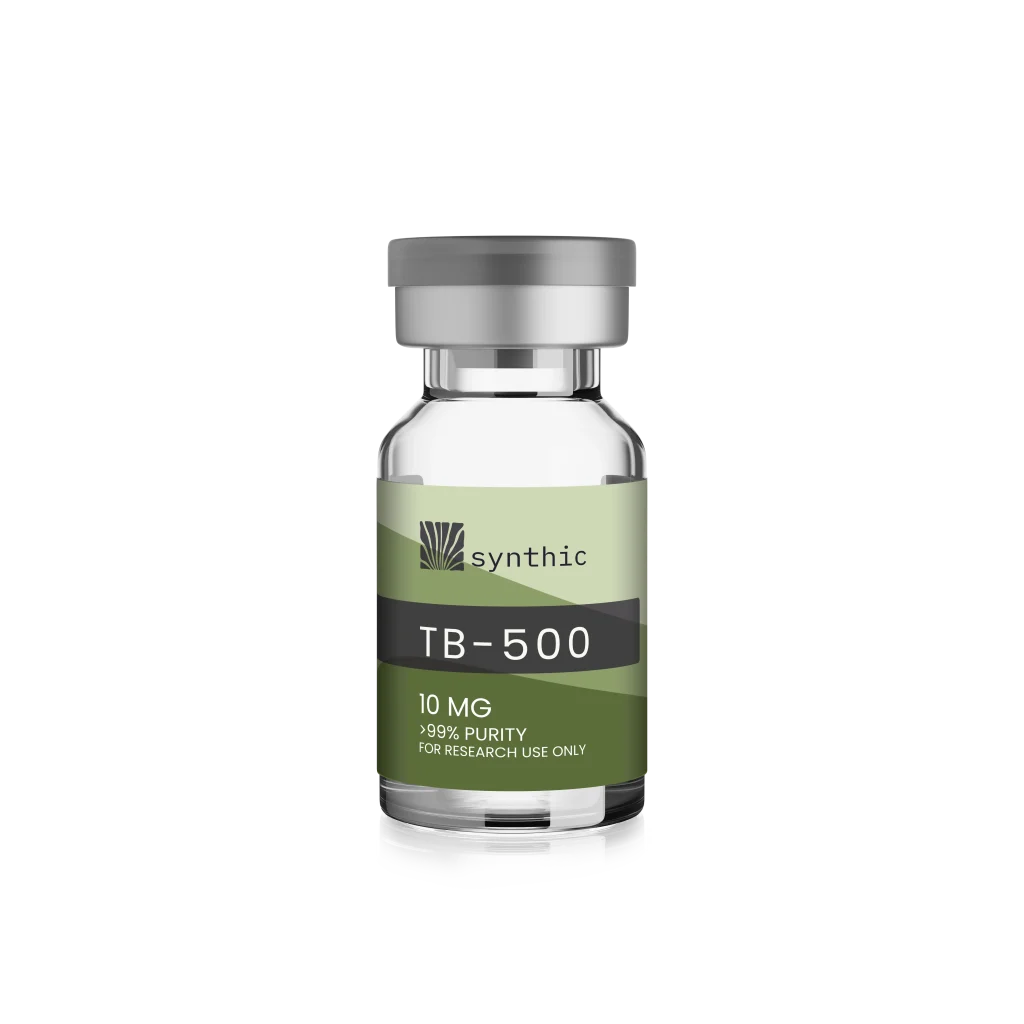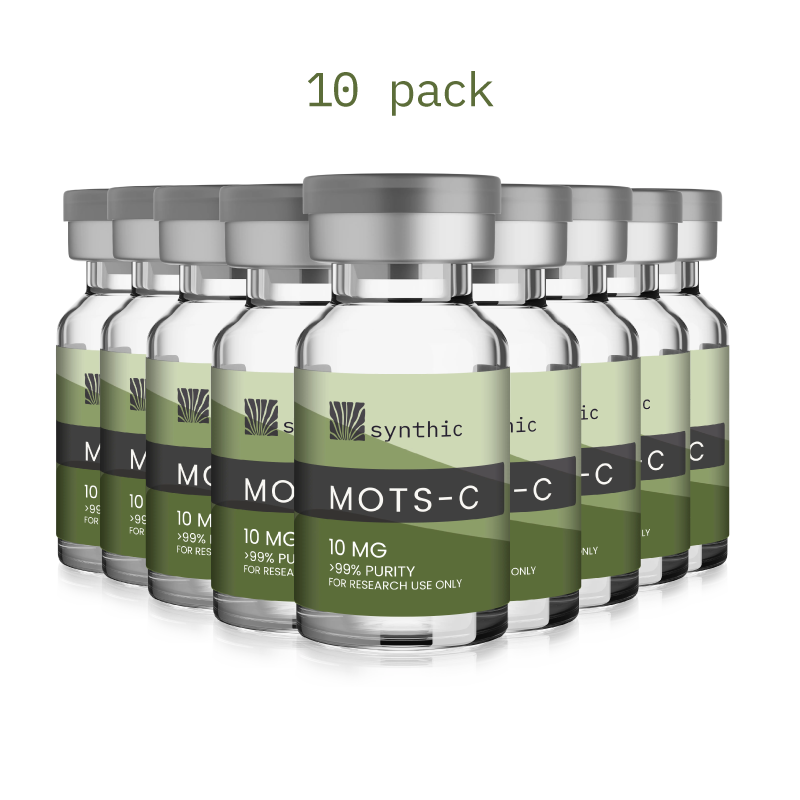As interest in mitochondrial function and cellular energy optimization grows, researchers are turning their attention to a unique mitochondrial-derived peptide known as MOTS-c. Unlike most peptides produced in the nucleus, MOTS-c is encoded by mitochondrial DNA, giving it a distinct role in regulating metabolism, stress adaptation, and energy output.
From improving insulin sensitivity to boosting exercise capacity, MOTS-c is being studied as a multi-functional peptide with promising applications in metabolic, longevity, and performance research.
What is MOTS-c?
MOTS-c (Mitochondrial ORF of the 12S rRNA type-c) is a 16-amino acid peptide produced by the mitochondria—the energy-generating structures within cells. It plays a central role in regulating how cells respond to metabolic stress, manage energy substrates, and adapt to changing physiological demands.
Its ability to modulate gene expression and activate energy-sensing pathways has positioned it as a compelling focus in emerging metabolic and performance science.
How MOTS-c Works: Energy and Beyond
MOTS-c helps optimize cellular energy production and metabolic balance by activating key biological systems:
- AMPK Activation – Boosts energy metabolism, enhances glucose uptake, and improves fatty acid oxidation
- Insulin Sensitivity – Supports blood sugar regulation in muscle and liver tissue
- Mitochondrial Function – Promotes more efficient ATP (energy) production and oxidative capacity
- Stress Adaptation – Enhances resilience during caloric restriction, exercise, or hypoxic conditions
These effects collectively contribute to increased physical energy, metabolic efficiency, and cellular endurance.
Energy Enhancement in Research
In preclinical studies, MOTS-c has been associated with:
- Improved exercise capacity
- Greater endurance under physical stress
- Enhanced mitochondrial biogenesis
- Higher fatty acid oxidation (fat for fuel)
By mimicking the cellular benefits of exercise at the molecular level, MOTS-c is being explored as a candidate for supporting energy levels in both healthy and metabolically compromised models.
Key Research Areas of Interest
1. Metabolic Optimization
MOTS-c is under investigation for its ability to support:
- Insulin sensitivity and glucose metabolism
- Reduction of visceral fat
- Enhanced lipid utilization
- Supportive effects in models of obesity and metabolic syndrome
2. Physical Performance and Endurance
Research indicates that MOTS-c improves physical output by:
- Enhancing mitochondrial efficiency in skeletal muscle
- Increasing endurance and stamina
- Mimicking calorie restriction benefits without energy deprivation
3. Healthy Aging and Stress Resistance
Because mitochondrial decline is associated with aging, MOTS-c is being studied for:
- Cellular protection against oxidative damage
- Improved metabolic flexibility
- Longevity support via energy signaling pathways like AMPK
MOTS-c Research Profile at a Glance
| Attribute | MOTS-c |
| Origin | Encoded by mitochondrial DNA |
| Peptide Length | 16 amino acids |
| Primary Focus | Metabolism, energy, mitochondrial health |
| Pathways Involved | AMPK activation, insulin signaling, lipid oxidation |
| Key Research Areas | Exercise performance, insulin sensitivity, aging |
| Delivery Method (research) | Typically subcutaneous |
Why MOTS-c Matters
What sets MOTS-c apart is its ability to act as both an energy modulator and genetic signaler—influencing how the body allocates resources, adapts to stress, and maintains performance. Its systemic effects make it a unique addition to research focused on energy regulation, especially in the context of endurance, metabolic flexibility, and aging.
Current Limitations and Considerations
While MOTS-c continues to gain traction in research, it remains an investigational compound. Human data is emerging but still limited. Areas for continued exploration include:
- Dosing, timing, and optimal delivery methods
- Long-term safety across diverse models
- Stability and bioavailability in different environments
Despite these unknowns, the favorable preclinical safety profile and performance outcomes make MOTS-c a compelling target for ongoing study.
Conclusion
MOTS-c represents an exciting step forward in the exploration of mitochondrial peptides—combining metabolic regulation, physical performance enhancement, and cellular resilience in a single, naturally encoded compound. Whether used to study metabolic stress, endurance capacity, or age-related mitochondrial decline, MOTS-c offers a flexible, powerful tool for researchers focused on optimizing biological energy systems.
As interest in energy-centric therapies and mitochondrial health continues to rise, MOTS-c is poised to remain at the forefront of innovation.



